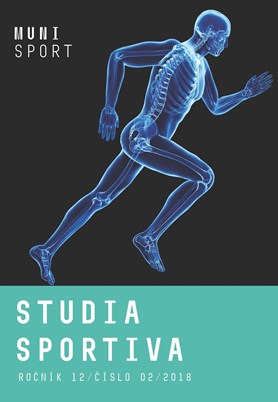Kineziologická analýza odrazu při běhu na lyžích dvoudobým střídavým klasickou technikou a oboustranným odvratem (stromečkem)
The reflection kinesiology analysis of cross country skiing – classical technique diagonal stride and herring bone
Author(s): Martina Chrástková, Petr Novotný, Bronislav KračmarSubject(s): Sports Studies
Published by: Masarykova univerzita nakladatelství
Keywords: kinesiology; EMG; electromyography; cross-country skiing; classical technique; herringbone; kick; reflection; muscle activation; phylogenesis of human locomotion
Summary/Abstract: The study brings the comparison of the representative coordination parameters during cross-countryskiing – classic technique-diagonal stride and herringbone. There was watched the kick in the comparativeanalysis because the kick is determinative for propulsion. The activation of selected muscles on thelegs during the skiing was monitored with surface electromyography. For the pinpoint of the boundarybetween two followed movement cycles, we used the synchronized accelerometer.The gained data was processed by SW Mega Win and MatLab and analysed by the progressivetriangle method and compared by ANOVA1. The monitored group was created by seven men whowere members of Czech Cross-Country Ski Team.Base on the monitored data we may presume the high level of the lateral similarity of cross-countryskiing classic technique and herringbone as well. The base of significant differences in the musclesactivation was found in the present the glide phase of movement cycle. The glide phase is very importantduring the diagonal stride cycle while the herringbone step is not contained any gliding. Duringhuman phylogenies, no animal uses any gliding so the gliding by the diagonal stride is not nature andthe man have to learn it.
Journal: Studia sportiva
- Issue Year: 12/2018
- Issue No: 2
- Page Range: 33-45
- Page Count: 13
- Language: English, Czech

